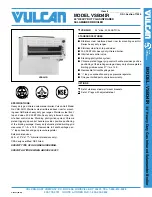
28
www.eta.co.at
Chimney
Information for installation
Insulate flue pipe to chimney
The flue pipe from the boiler to the chimney should be
insulated with at least 30 mm, preferably 50 mm, of
mineral wool to avoid temperature losses, which can
lead to a build-up of condensation.
Prevention of structure-borne noise
There should not be a fixed connection between the
flue pipe and the chimney to prevent structure-borne
noise as much as possible! Good flue gas systems are
acoustically insulated. If steel pipes are connected to a
fireclay chimney, ceramic fibre bandages have proven
effective at preventing structure-borne noise as well as
damage to the fireclay sleeve.
Cleaning opening in flue pipe
Easily accessible cleaning openings must be available
for cleaning the flue pipe.
Fig. 7-4: Cleaning opening
Fit the chimney connection just under the ceiling
Even if the current boiler can be connected to the
chimney at a low height, it is better if you fit the
chimney connection just below the ceiling. The flue
pipe is easier to install, and the vertical connecting pipe
is long enough for an emission measurement.
A second chimney connection below the first one
enables simple installation of a draught limiter, if
this is required.
Measurement opening for the emissions
measurement
Create a self-locking and sealing measurement
opening in the flue pipe for the emissions measure-
ment. The measurement opening must be
implemented in accordance with national directives.
Fig. 7-5: Measurement opening
The measurement opening must be created in the
vertical portion of the flue pipe. A straight section of a
suitable length must be present before and after the
measurement opening because, otherwise, turbulence
at the measurement points will prevent meaningful
measurements. The clearance from the boiler's flue
duct connection or from a pipe bend must be at least
twice the diameter of the flue duct.
Deflagration damper
The boiler is designed with safety routines in the
control system to prevent deflagrations. Thus, no def-
lagration damper (also often called an explosion flap)
is required for a boiler output up to 50 kW if the flue
pipe is short and ascends to the chimney.
Fig. 7-6: Example: deflagration damper with draught limiter
We recommend using a deflagration damper for boiler
outputs of 60 kW and up. A deflagration damper is
required for boiler outputs of 100 kW and up. While the
















































